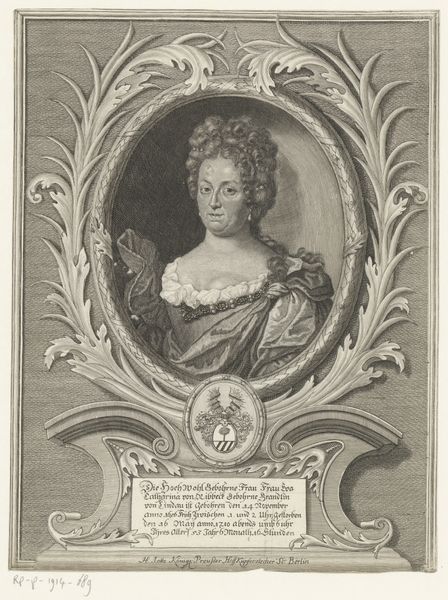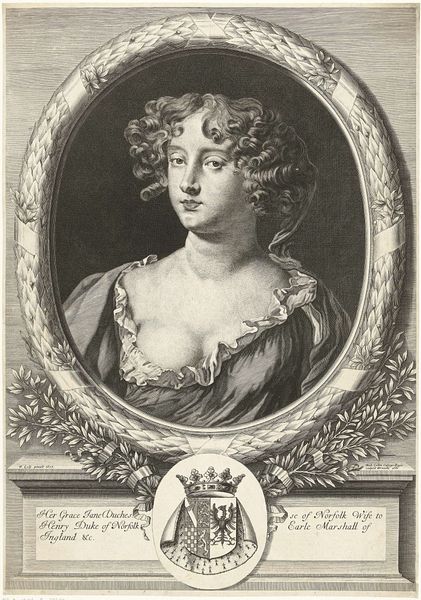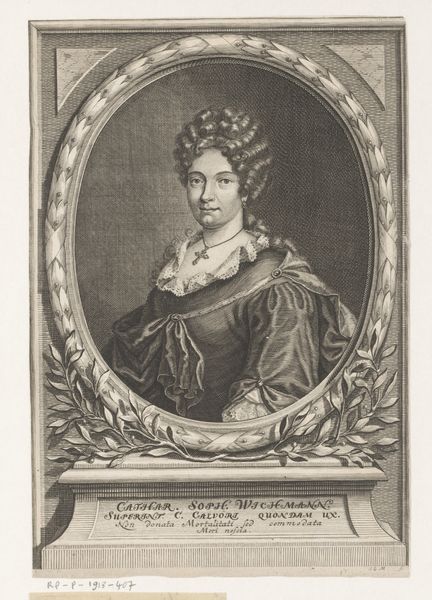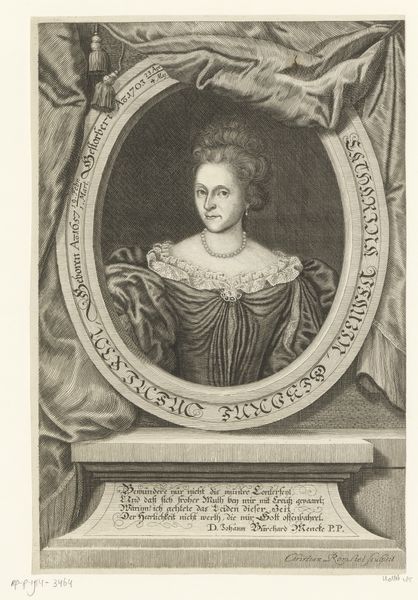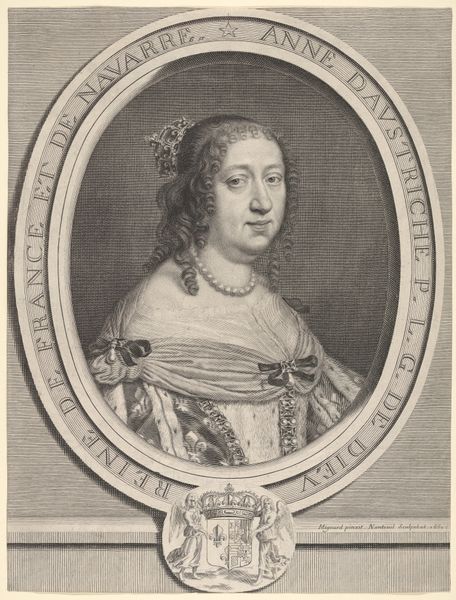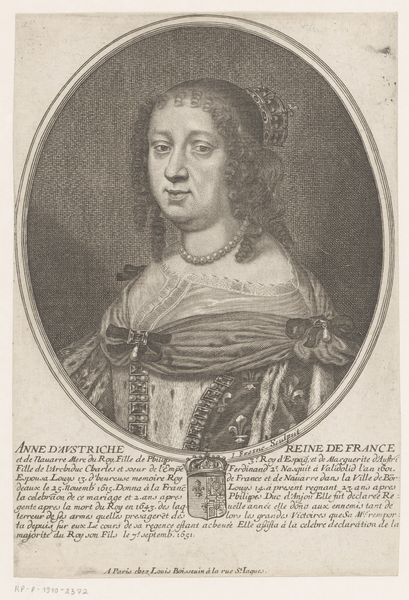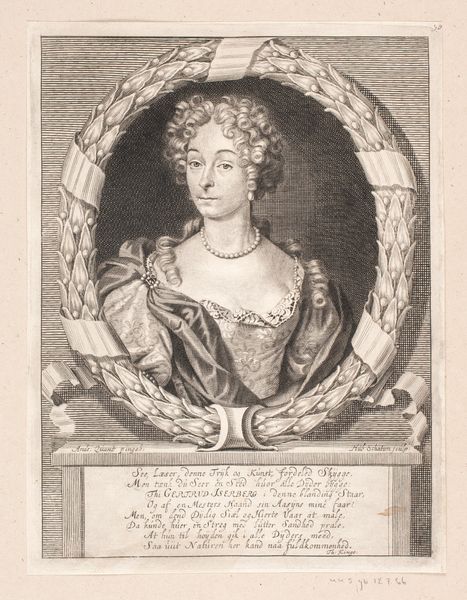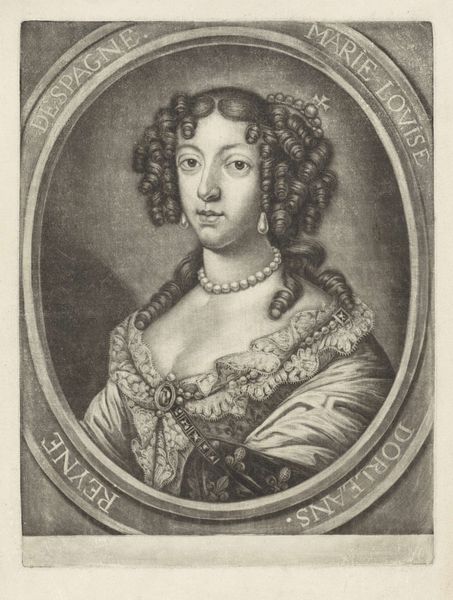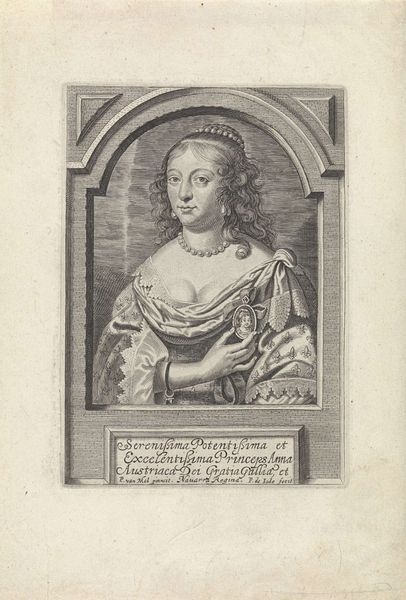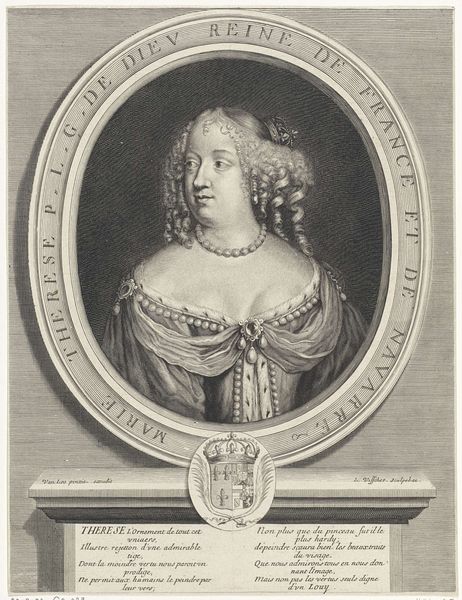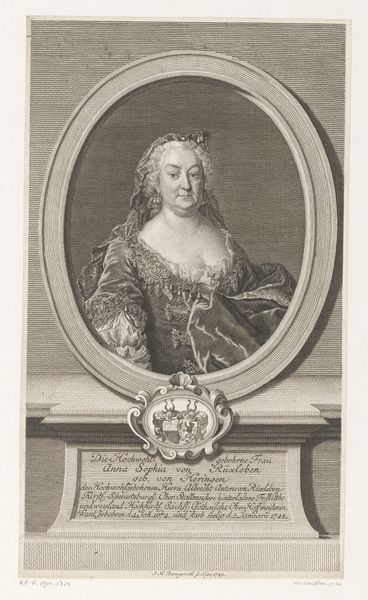
Portret van keizerin Eleonore Magdalene Therese van Palts-Neuburg 1690 - 1697
0:00
0:00
print, intaglio, engraving
#
portrait
#
baroque
# print
#
intaglio
#
old engraving style
#
line
#
history-painting
#
engraving
#
realism
Dimensions: height 195 mm, width 136 mm
Copyright: Rijks Museum: Open Domain
Editor: Here we have a portrait, an engraving titled "Portret van keizerin Eleonore Magdalene Therese van Palts-Neuburg" made between 1690 and 1697 by Leonhard Heckenauer. The detail is quite remarkable. What do you see in this work, especially given its historical context? Curator: This portrait offers a fascinating glimpse into the performance of power and gender in the late 17th century. The intaglio and engraving medium speaks to a culture of replication and dissemination of imperial images. Consider how Eleonore Magdalene is presented: her gaze, the ornate details of her clothing, and the surrounding frame—they all work to construct a very specific image of imperial authority. Do you notice how her status transcends a personal portrait, instead projecting a persona for the ages? Editor: Yes, definitely. The oval frame almost makes it feel like a classical cameo, emphasizing the timelessness. What does that say about how the artist viewed her, or even how she wished to be perceived? Curator: Precisely. It points to an interesting tension. On one hand, there's the ambition to align her with established, even ancient, forms of authority, seen in the laurel wreath. But look closely. Does this capture lived experiences and complexities of a woman navigating a highly patriarchal structure, or is this only for outward facing purposes? What do you think that might be representative of in relation to gender roles and courtly life at the time? Editor: So, it's almost like a carefully constructed mask of power, hinting at perhaps, the limitations placed on her even within her elevated position. Curator: Exactly. Think about how these carefully crafted images reinforced not only her position but the broader political and social order. This portrait becomes a site where power, gender, and representation intersect and where her identity became inseparable from her position of power. Editor: I see. So much more than just a picture of a queen! It is really cool to think of art in these terms, questioning whose interests it serves. Curator: Indeed. It reveals the power of art to both reflect and shape our understanding of the past and present, especially as we evaluate systems of representation.
Comments
No comments
Be the first to comment and join the conversation on the ultimate creative platform.
